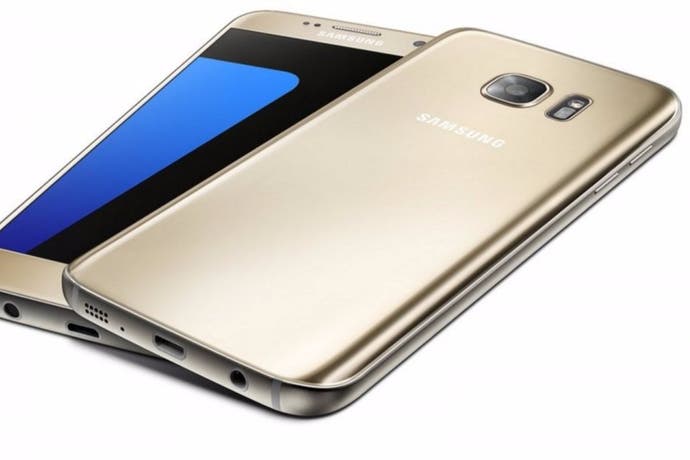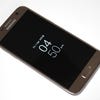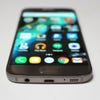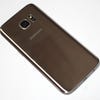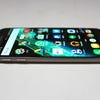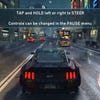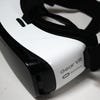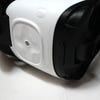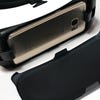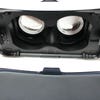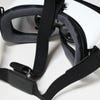Samsung Galaxy S7 review
Seventh heaven.
Last year, we applauded Samsung's apparent willingness to listen to its critics and change the way it makes smartphones. The result was the wonderful Galaxy S6, a premium metal-and-glass handset more than capable of going toe-to-toe with Apple in the desirability stakes - and one of the most powerful phones of 2015. The positive reception afforded to its appearance makes it easy to understand why Samsung - still clearly keen to take on feedback, despite its status as the world's biggest manufacturer of smartphones - has decided to borrow a page out of Apple and HTC's book by retaining the same design language for a second year, albeit with some minor modifications. Oh, and those elements Samsung cruelly removed from the S6 - such as expandable storage and a waterproof casing - are back too. This feels more like an "S6S" then, but Apple's strategy appears to have worked well enough over the years, so one can hardly blame Samsung for aping the approach.
That's not to say that the Galaxy S7 is total dead-ringer for last year's offering. The back of the device how has a curved surface which allows for a bigger battery but also reduces the unsightly camera bump that made the S6 so hard to lay down on a table. A thicker phone might sound like a drawback, but the aforementioned curves make it feel almost identical to its forerunner. The glass back has a similar look to the one on the S6, and is just as prone to cracking - a protective case of some description is a highly recommended first purchase, despite the fact that will obscure the phone's gorgeous bodywork.
On the top edge you'll find that the S6's IR blaster has sadly been removed, while around the front, things are almost identical to last year's offering, with the same 2560x1440 pixel Super AMOLED screen. The lack of a resolution bump might be disappointing for some fans- even though it's impossible to spot individual pixels with the naked eye - but in everyday use the S7's display is fantastic, offering bold colours and the deep blacks you instantly associate with AMOLED panels. The only genuine need for a higher resolution is if you're serious about virtual reality, which we'll come to later in the review.
Samsung is making a lot of noise about the S7's 'always on' display, taking advantage of the phone's AMOLED screen to present at-a-glance information 24 hours a day. AMOLED screens switch off black pixels, so the always-on screen is only using a small amount of power - less than one percent per hour, according to Samsung. However, the battery consumption is balanced out by the fact that you don't have to power-on your phone to see the time, and that means you use less juice in the long run. Missed notifications such as text messages and calls are also displayed, but sadly the screen doesn't show unread emails, which would have been even more useful. When the phone is in your pocket or face-down on a table, the display is turned off completely, saving even more power.
Last year's excellent fingerprint scanner makes a return, this time backed up with dedicated support with Android 6.0, rather than Samsung's proprietary software. That means as well as using the scanner to unlock your device, you can also use it to make payments on the Google Play store and other compatible apps, as well as for contactless payments via Samsung Pay and Android Pay, both of which are expected to launch in the UK this year.
More robust functionality tied to the fingerprint scanner is welcome, but even more appealing is the fact that Samsung has restored two of the Galaxy range's most coveted features - waterproofing and micro SD card support - both of which were removed from the S6, apparently because the premium design couldn't accommodate them. Samsung has clearly been hard at work rectifying this 'oversight' and the S7 is a much more accomplished handset as a result. The IP68 certification means the device is dustproof and water resistant to depths of 1.5m for a maximum of 30 minutes, and Samsung has achieved this without the need for fiddly plastic covers on the headphone socket and charging port.
While you could argue that the last thing that any sane person would do with a £500 smartphone is take it anywhere near a large body of water, accidents do happen, and it's comforting to know that the S7 is capable of surviving an unscheduled dip in the bath/toilet/sink/swimming pool (delete as applicable). Meanwhile, micro SD cards fit into the SIM card tray, which is now longer to accommodate this additional functionality.
| Galaxy S7 | Galaxy S6 | Galaxy S5 | Google Nexus 5X | Google Nexus 6 | iPhone 6S | iPhone 6 | |
|---|---|---|---|---|---|---|---|
| Geekbench Single-Core | 2171 | 1233 | 972 | 1263 | 1053 | 2552 | 1605 |
| Geekbench Multi-Core | 6465 | 3964 | 2949 | 3436 | 3081 | 4464 | 2901 |
| 3DMark Graphics | 32404 | 22954 | 17464 | 22074 | 24668 | 41968 | 22824 |
| 3DMark Physics | 17730 | 17795 | 15541 | 12641 | 17259 | 12998 | 9385 |
| 3DMark IceStorm Unlimited | 27370 | 21565 | 18524 | 18934 | 23205 | 28067 | 17304 |
| GFXBench T-Rex | 87.0 | 58.0 | 27.4 | 38.0 | 37.0 | 79.7 | 42.8 |
| GFXBench Manhattan | 29.0 | 25.9 | 11.4 | 16.2 | 18.0 | 40.3 | 18.1 |
Micro SD support is worth covering a little more in-depth, as Samsung's approach is rather different from what many will have been expecting, especially in the light of Android's new adoptive storage feature. After years of using micro SD cards as photo and music storage, Google has finally allowed expandable media to be treated the same as the phone's own internal flash memory - so adding a 32GB micro SD card adds 32GB to your total quota, rather than showing it as side storage. However, Samsung has decided against using this feature, instead arguing that users want to be able to hot-swap cards packed with their own content (cards which have been formatted for use with adoptive storage cannot be used with other devices). It's a fairly flimsy argument and one that ignores the fact that it's easy to simply copy and paste content over to your phone using a PC rather than inserting your old micro SD card. There's a chance that Samsung could enable adoptive storage in a future OTA update, but for the time being it feels like something of a missed opportunity.
Given how capable the Galaxy S6 was in terms of pure processing power, it seems almost absurd that we're already looking at a more powerful successor. Problems with Qualcomm's much-maligned Snapdragon 810 chipset forced Samsung to use its own Exynos 7420 in last year's phone, a commendable decision that served to highlight how capable the South Korean's own silicon is. With the Galaxy S7, Qualcomm and Samsung have rekindled their relationship and the phone is one of the first to use the Snapdragon 820 - in certain territories, at least. The European model we reviewed has Samsung's own Exynos 8890, which isn't quite as adept as Qualcomm's new chip but - according to comparative benchmarking - offers performance that is practically identical. 4GB of RAM also helps when it comes to multitasking, and in general the user experience is flawless, with no lag or stuttering to be seen, even when the phone is under heavy load and running multiple processes.
A rise in power naturally means better gaming performance, and all of the games we tested on the phone ran as flawlessly as you can expect - the usual optimisation issues that plague Android games remain, but overall this device offers up an agreeable mobile gaming experience. However, Samsung has grander plans for its Galaxy range than just mobile titles - late last year the company released its Virtual Reality collaboration with Oculus, named Gear VR. While this headset - which requires a Samsung smartphone to operate - is also compatible with the S6, S6 Edge and Galaxy Note 5, Samsung is giving it a fresh and timely push alongside the S7 and S7 Edge, even going as far as to offer free units to buyers of these new phones in North America. The unit itself contains very little tech but boasts its own inertial measurement unit, which works in tandem with the phone's own IMU to grant highly accurate head tracking.
Powered entirely by the phone itself and therefore totally free from intrusive wires, Gear VR is arguably one of the most accessible entry points into Virtual Reality right now - something Oculus CTO John Carmack has recently gone to great lengths to point out. Cable-free "mobile VR" could be the best chance the concept has of convincing casual players to don such a headset, and the forthcoming Gear VR port of Minecraft could well be the killer app that Samsung needs.
We tested a handful of games on the device and found them to be shallow but striking experiences; UsTwo's atmospheric Land's End makes full use of the Gear VR's 360 degree movement possibilities, at times calling for the player to turn around 180 degrees to see their next objective, while EVE Gunjack offers short-burst arcade action twinned with stunning visuals. It's when using Gear VR that you'll lament Samsung's decision not to include a 4K screen in the S7 - the image is quite pixelated, which is hardly surprising when you consider that the display is very close to your eyes and is being magnified by the lenses inside the Gear VR. 4K visuals would naturally incur a performance hit though - perhaps next year.
On the software side of things, it's pretty much business as usual. The phone ships with Android 6.0.1, the latest version of Google's mobile operating system that introduces some neat features, but in general looks it's almost identical to the previous version, Lollipop. Google Now On Tap makes Google's virtual assistant even more useful, allowing you to scan any screen for keywords which then open up more searches and information.
Doze is another new element, aiming to prolong battery life by allowing the phone to go into a deep sleep when it's not in use - so when the phone is resting on a table and you don't pick it up for a while Doze activates. Stamina is conserved by disabling all but the most important notifications - so calls and text messages will still get through, but you won't get alerts from apps that aren't marked 'high priority'. Google has taken steps to prevent developers from circumventing this by making all high priority-marked apps go through a Google Cloud Server, allowing the company to identify any that abuse the system. Doze is a great feature that really increases battery life when your phone is resting on your bedside table, but in the day its benefits are less noticeable - unless you're the kind of person who leaves their handset undisturbed on a desk for long periods.
As ever, Samsung has slapped its own user interface on top of the core Android experience. TouchWiz isn't as pronounced as it was a few years back and some of Samsung's most intrusive additions have been scaled back (Flipboard is nowhere to be seen, and its replacement - the sluggish Upday - can and should be disabled almost as soon as you switch on the device), making it a more agreeable experience. There are still some annoying apps which cannot be uninstalled - Microsoft ones mainly, thanks to a recent deal between the two firms - but Samsung is taking steps in the right direction; for example, there's no native music player, with Samsung wisely realising that most Android users want to use Google's Play Music app for their audio needs. This means there's less duplication of functionality than we've seen in previous Galaxy handsets, although there's still S Health, S Voice and S Planner in place, all of which are largely pointless to anyone who has used an Android device in the past.
On paper, it would appear that the one area where the S7 doesn't improve on the S6 is the camera. Last year's model was equipped with a 16-megapixel sensor, but the S7 is only packing 12 megapixels. The reason for the drop is a desire to bolster the camera's low-light shooting prowess; the sensor is the same size but the reduced number of pixels means that each one can be larger and therefore let in more light - and that means photos in darkened environments come out better than ever. According to Samsung, these larger pixels - when combined with the larger f/1.7 aperture - offer a 95 percent increase in light capture when compared to the S6.
The good news doesn't end there. The S7 is also the first smartphone to boast a dual-pixel sensor. Instead of using a small five per cent sub-set of special pixels on the sensor for phase detection autofocus like most smartphones, it uses 100 percent of the pixels for focusing. The upshot is incredibly fast autofocus that locks onto subjects regardless of where they happen to be in the shot. Throw in the usual suite of shooting modes and manual options - as well as the ability to save in lossless RAW format - and the photographic package is even better than that witnessed on the S6, which is a remarkable achievement when you consider how good the camera was on that phone. This is arguably the best mobile phone camera money can buy right now.



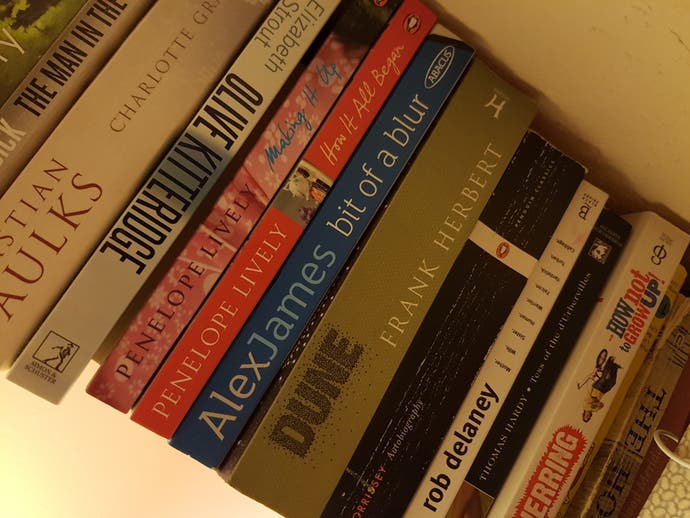
The Galaxy S6's 2550mAh battery was one of its biggest drawbacks, but again, Samsung has listened to its critics and implemented improvements here. The curved back accommodates a 3000mAh battery, aided by the aforementioned Doze feature. Samsung's power saving and ultra power saving modes allow you to squeeze as much performance as possible out of a single charge, but on average we found that the phone always makes it through an entire day.
Quick charging means you can top up the battery in just over an hour, while wireless charging is much slower - and you'll need to invest in a compatible charging pad as one isn't included. It's worth noting that Samsung hasn't jumped on board the USB Type-C bandwagon like many other manufacturers. That might seem like a negative point, but we're at least 12 months away from widespread adoption of Type-C and Samsung knows that most people have a multitude of Micro USB cables lying around. For now, it still seems like the more logical choice.
Overall, the Galaxy S7 iterates rather than reinvents. The S6 was a very accomplished device, but Samsung has taken the opportunity to fix the very minor problems users had with that phone - namely the lack of a waterproof casing and Micro SD card support. The enhancements don't end there though, with a better camera, faster CPU, improved design, larger battery and more advanced software out of the box. Elements which made last year's offering so highly recommended are back, such as an excellent Super AMOLED screen, nippy and accurate fingerprint scanner and both fast and wireless charging. Samsung has subtly but significantly refined what was considered in 2015 to be one of the best phones money can buy, and has created arguably the best Android handset on the market right now.
Review unit kindly provided by www.mobilefun.co.uk.
